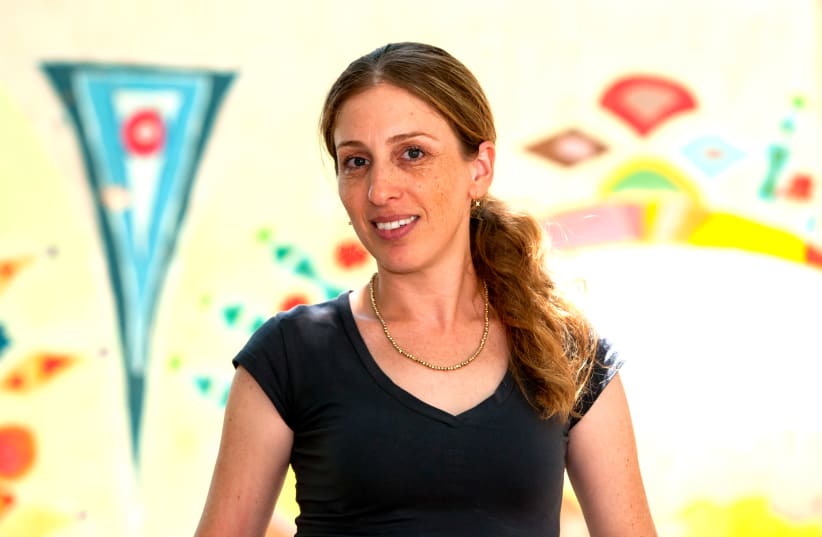The coronavirus pandemic has led to challenging and long-lasting effects on the Israeli education system. While the academic gaps could be addressed over time, other social and emotional impacts that students are now facing as they return to school may be harder to deal with.
According to Mika Dafni, who serves as head of pedagogical management at the Fund for Innovative Education, most of the difficulties teachers and students now face stem from a disruption of the relationships that are usually established in school.
“We’ve seen various kinds of social-emotional challenges, many of which are related to relationships – those established between teachers and students, among students in the classroom, within the staff and relationships developed between teachers and parents,” she told The Jerusalem Post.
Acknowledging the social and emotional difficulties experienced by students across the country in the wake of the pandemic, an initiative is encouraging educators and the general public to submit innovative solutions for promoting social and emotional learning (SEL) in schools.
Initiated by the Fund for Innovative Education, the ZOOM Out Challenge is looking for solutions that will “help rehabilitate students both emotionally and socially” so they are better prepared to cope with the return to school, following months on end of having close to no contact with their classmates or teachers.
The social and emotional deficiencies experienced by students during the pandemic, characterized by distance learning and communicating, has had real and disturbing consequences, Dafni said.
“We’ve seen normative students drop out, disconnect themselves completely... statistics show a rise in self-destructive behavior, tendencies to depression... and one can understand why: So many households were hit financially,” she said. “The pandemic has affected many circles, and students are responding to that.”
Distance learning has for the most part jeopardized students’ ambition, willingness to learn and curiosity, Dafni said, adding that various educational initiatives and outstanding educators have stood out, proving that it can be done correctly.
Incorporating new and innovative ideas into the education system has proven to be highly efficient in many cases, “and this has become even clearer this past year,” she said. “We’ve seen a changing reality and numerous new and old needs emerging from it.”
New ideas and the reevaluation of old ones will be necessary if we are to begin healing our education system, Dafni said.
A large gap has been created between educational institutions that chose to focus on its students’ social and emotional needs during the pandemic and those that paid less attention to such factors, stubbornly trying to instill educational excellence rather than adapt to a new reality, she said.
Schools that included comprehensive social-emotional support activities in their curriculums, such as establishing relationships, practicing self-learning capabilities and regularly providing students with exercises meant to help them cope with the difficulties they experienced, seem to have emerged even stronger from the pandemic.
“It made us realize just how much the social-emotional aspect is not disconnected from the academic part,” Dafni said, adding that it was educators who first stepped up to address the issue.
“The system was baffled,” she said. “The people who ended up providing the creative solutions were those in the schools. A teacher can’t only be an academic, and research supports it. They have to possess social and emotional faculties, and that’s why it’s part of their jobs.”
Therefore, a desired side effect of the ZOOM Out Challenge is empowering teachers, rekindling their innovative spirits and giving them back a sense of agency, which was systematically eroded over the years by the system they function in, Dafni said.
Teachers will be the ones to eventually solve the system’s major current challenges “if they are provided with the proper conditions and support,” she said.
Regarding the issue of diversity in Israel, Dafni stressed the importance of reaching all sectors in society and gaining a full picture of the phenomenon. Eventually, the idea is to identify patterns, reoccurring practices and to reach “meta insights” that could then be provided to the Education Ministry” and implemented nationwide, she said.
Selected solutions will first be incorporated in grades five through 10 in 40 public schools across the country, including Jewish, Muslim, Druze, Bedouin, religious and nonreligious ones. Once they prove effective, selected ideas will be integrated in more schools and hopefully adopted in others.
Submissions for innovative ideas that will help promote SEL in classrooms are open until the end of May at https://zoomout.org.il/.
Suggested activities may include a bimonthly process, a series of meetings, one significant activity or other structured activities.
